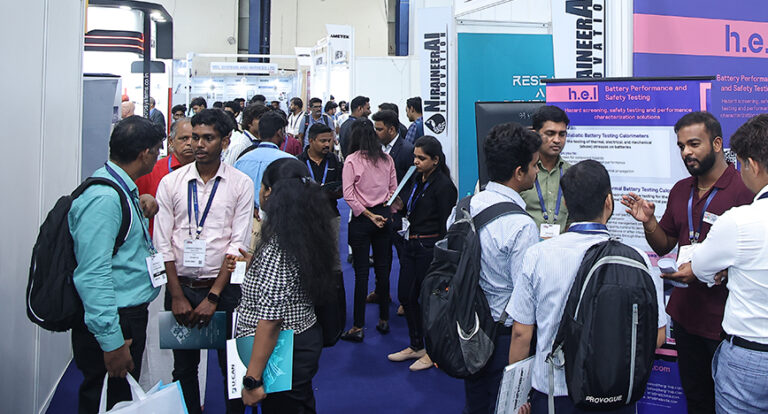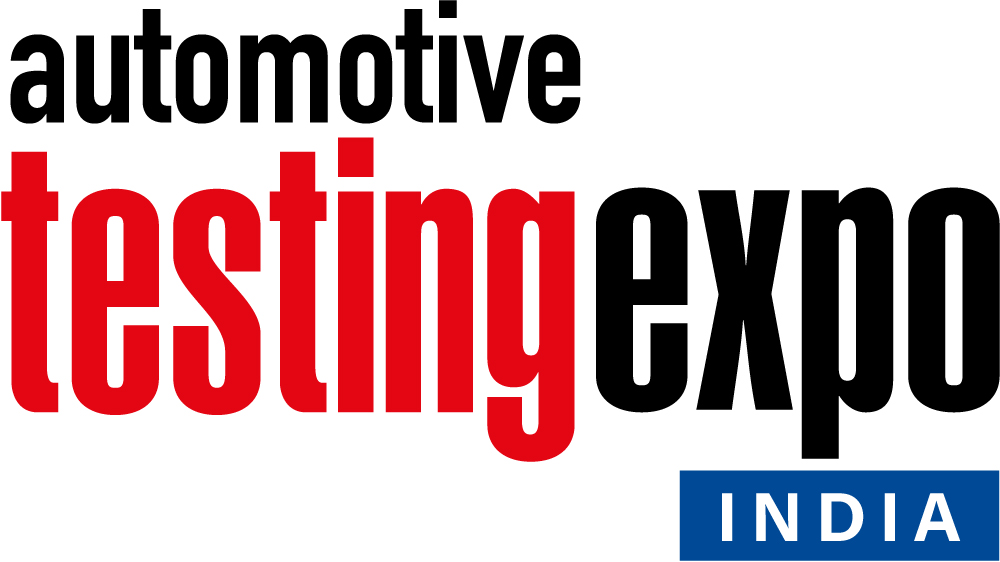Product launches abounded on the show floor on Day 2 of Automotive Testing Expo, while the new SAEIndia Automotive Leadership Summit facilitated the exchange of knowledge between industry experts. Speakers from OEMs, academia, suppliers, standards organizations and regulators explored the unique challenges and opportunities for the Indian automotive testing and development sector, the importance of cross-industry collaboration and the country’s capabilities for the global market. Plus, the afternoon saw an exciting announcement from SAEIndia and Automotive Testing Expo.
SAEIndia Automotive Leadership Summit Day 2 opens with ‘Safe and connected vehicles for the future’ session
The second day of the SAEIndia Automotive Leadership Summit began in Hall 1 at 10:00hrs with the ‘Safe and connected vehicles for the future’ session, with speakers from LDRA Technology (Supporting Partner), IIT Hyderabad, ICAT, Continental and Spark Minda. The session was moderated by Shinto Joseph, director – South East Asia and ANZ operations at LDRA.
According to Joseph, “The digitization of products and services offers a real opportunity. Road accidents account for a 2.5% GDP loss in India – if someone dies, the family loses everything.” Jospeh emphasised the importance of India’s cultural role in regard to safety, and enforcing a global safety culture in the organization. For Dr Latha Chembrakalam, vice president and head of Continental’s Technical Center India, environmental conditions in India impact safety, altering product orientation and the value of safety.
The risks of connectivity were also explored. Dr Madhusudan Joshi, automotive cybersecurity specialist and head of technology and business, ICAT, highlighted the need for regulation of software updates. On the topic of ‘Why SDV?’, D Suresh, group CTO, Minda Corporation, said that there are three megatrends: technology, need for safety, and the move from distributed architecture to a centralized architecture. “The need for safety is increasing so there is a need for better performance computing and knowing how a system should behave in adverse conditions.” LDRA’s Shrikant Satyanarayan explained, “When there is a security breach there is a real impact of on safety. Previously there was more focus on functional safety, but with more innovations and connectivity, there is also a risk of cybersecurity attacks such as outside control of ECUs and steering, which always hits vehicle safety.”
The Indian Institute of Technology, Hyderabad’s Prof. P Rajalakshmi revealed, “We are developing an end-to-end autonomous driving stack and making it more robust, trained with the Indian dataset. We are also working on all weather and all light conditions. Doing so enhances functional safety – there are more edge cases captured during testing phases, making the stack model more robust and increasing safety. We’ve captured a huge amount of data across India in order to train the perception stack. We are capturing the diversity of the country in terms of language and vehicle types – body types and signs are so different. We also have a CV2X, hardware and software stack for different connected vehicle applications which enables road safety. This is connected as well as autonomous.”
Prof. Rajalakshmi will be speaking on SDVs at Automotive Testing Expo Europe in Stuttgart this May.
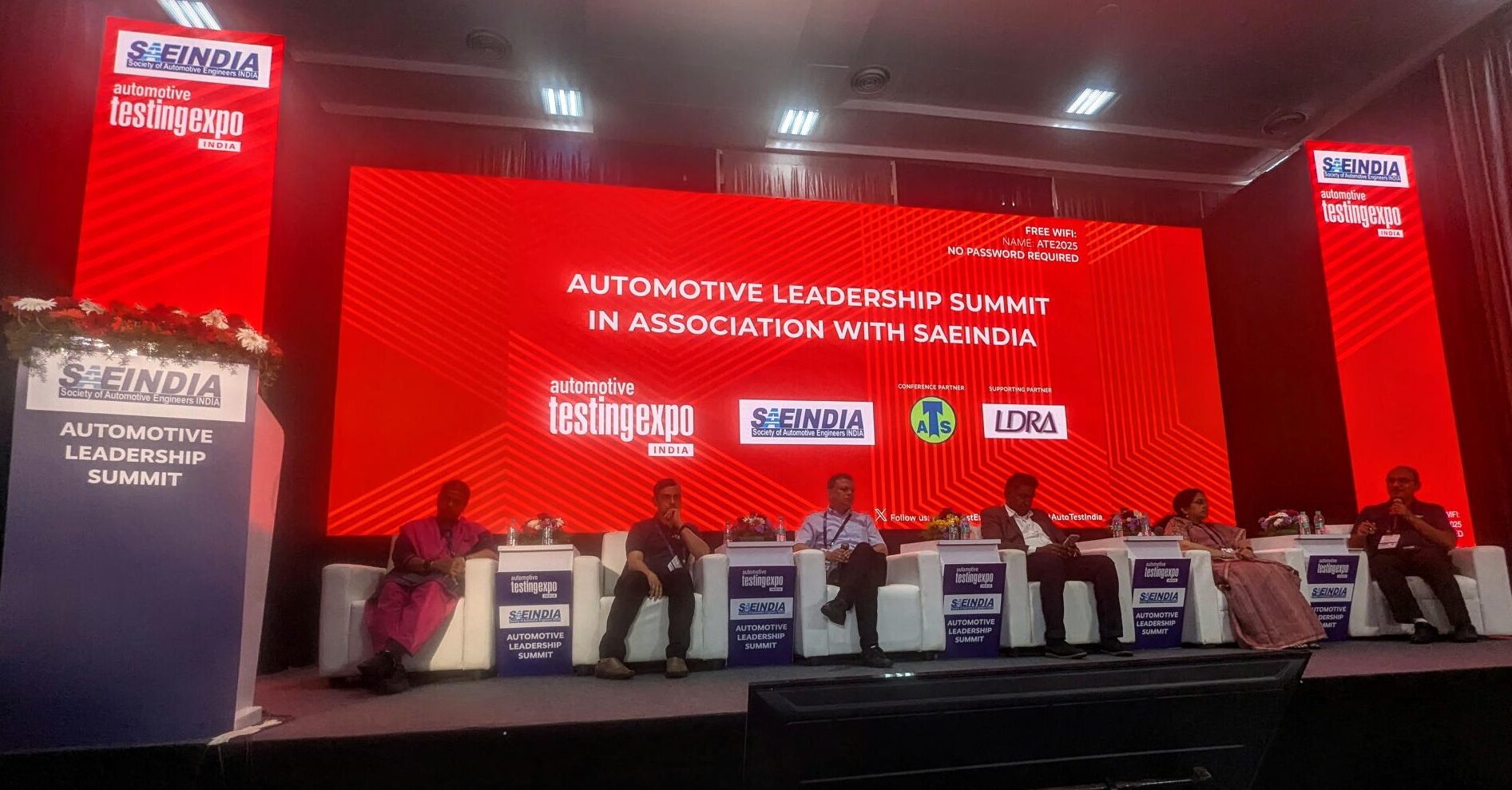
The future technologies session was followed by a panel discussion on SDV, ADAS, V2X and AI, with speakers from NATRAX, ARAI, Mahindra & Mahindra and Automotive Test Systems.
The panel was moderated by Nilesh Wadhwa, assistant editor, Motoring Trends & Tire Trends, PIN 365 (Automotive Testing Expo India media partner). Wadhwa commented, “Automotive Testing Expo India was a very interesting and insightful event, wherein the leading voices from the automotive industry and ecosystem players offered plenty of key takeaways. SDVs, ADAS, cybersecurity and vehicle safety were the hot topics in focus. The speakers were quite passionate about seeing the Indian automotive industry evolve to become the next powerhouse. It was quite evident that there needs to be more interaction between the industry stakeholders and forums such as Automotive Testing Expo India.”
He continued, “As discussed and highlighted by speakers, the automotive industry must start working collectively, especially in the field of ADAS, as India-specific data needs to be validated and optimized for Indian driving conditions to make it more effective.”
NATRAX’s Dr Manish Jaiswal emphasised that the industry needs to understand local nuances (including infrastructure and driving habits) when it comes to these technologies, saying, “The sector cannot expect things to change quickly in terms of quality or standardization. Technology needs to adapt to these challenges, i.e. non-standard protocols.”
ARAI’s Ujjwala Karle added, “More data is better. Traffic data and the use of data is very important; can we work around scenario and solve the challenge?”
Concerning the differences in automotive testing and development between India and the rest of the world, Ramanathan Srinivasan, managing director, Automotive Test Systems, revealed, “In the case of emissions it is very easy to copy Europe and replicate in India. However, it is different in terms of ADAS – you cannot test everything on a test track. It requires a lot of testing and validation to homologate a vehicle – you cannot simply track test to certify vehicle and guarantee it will work on the road. Conditions change, sensors need to work together with the controller, scenarios need to be added into the simulation, etc. We need 150-200,000 scenarios, but where are they? We need to collaborate with the industry, for instance what is the critical data to validate it? India needs to start with a certain number of scenarios and build on it. We can create scenarios in simulation for validation on a test track, but we are limited to the number of test tracks on India – there are none for ADAS in India yet, but ARAI is building one in Hyderabad. It is a hardware to hardware transition from ICE to EV, but hardware to software is a much bigger transition; we need to drive collaboration for SDVs and an IP strategy as well for different products.”
The SAEIndia Automotive Leadership Summit session ‘Disruptions in mobility (emerging tech in ground mobility, EV, hydrogen, drones, hyperloop, aerospace) showcased speakers including Dr Bala Baradhvaj, VP engineering, Quintrans (former Boeing executive; former president, SAEIndia); Dr Arumugam Sakunthalai Ramadhas, director at Global Automotive Research Centre; Peter Langford, CEO, AvironiX; and Nikhil Rao, executive director and site leader at Boeing. The leadership summit ended with valedictory and closing remarks given by SAEIndia president Dr G Nagarajan, while over at the ATS Forum, the afternoon’s presentations from IIT Hyderabad and ATS focused on EV topics.
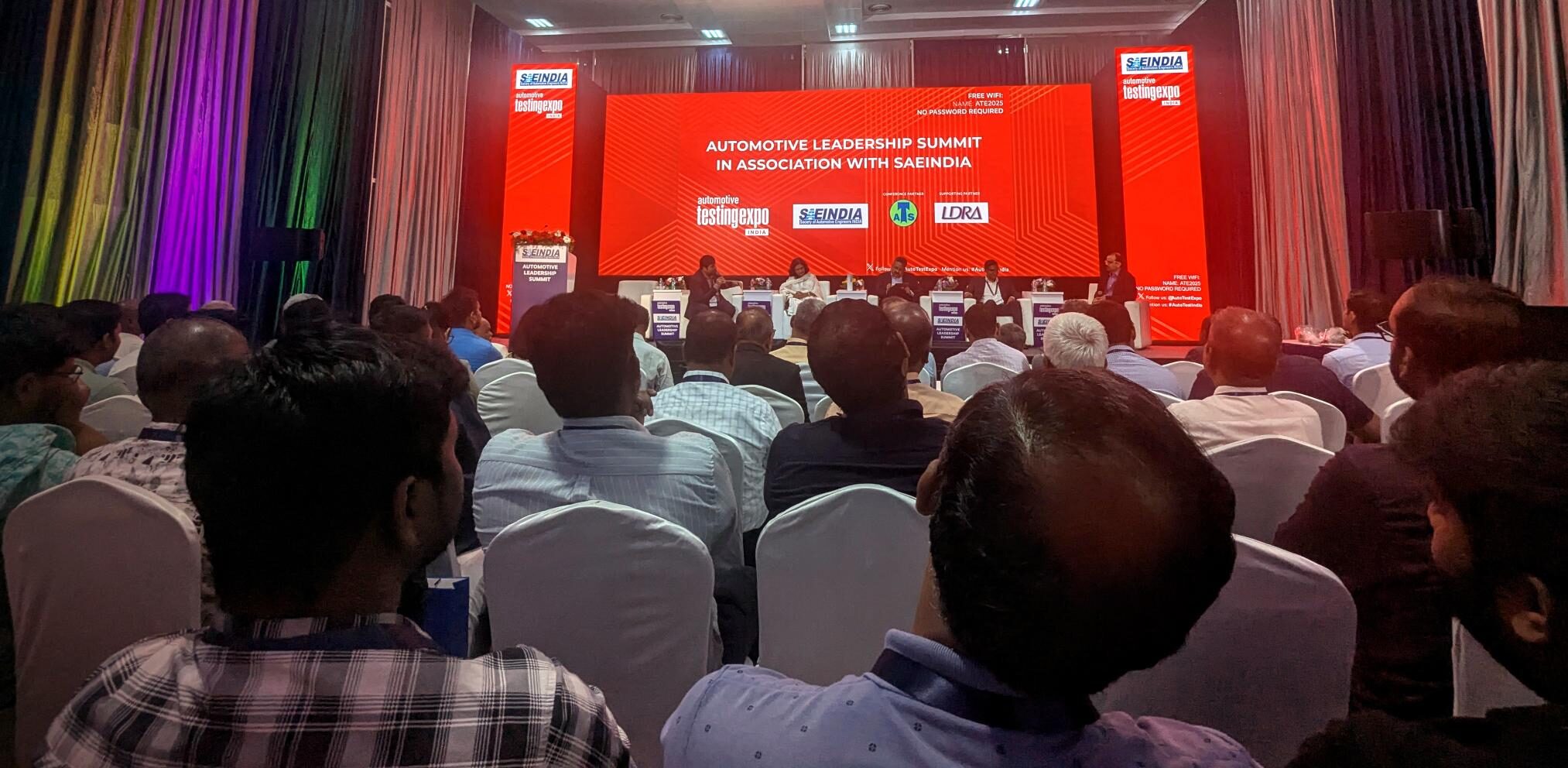
TASI showcases the future of leak testing
TASI launched its new product in Chennai today: the LTC-503. According to senior market analyst Aishwarya Dehmukh, “Our new LTC-503, the successor to the LTC-502, combines the highest accuracy with the highest usability at an attractive price. The LTC-503 sets new standards in usability, features and design. The entire development is based on over 40 years of experience in leak and flow testing, and we are proud to present such a great product launch at Automotive Testing Expo India 2025.”
Booth: 3011
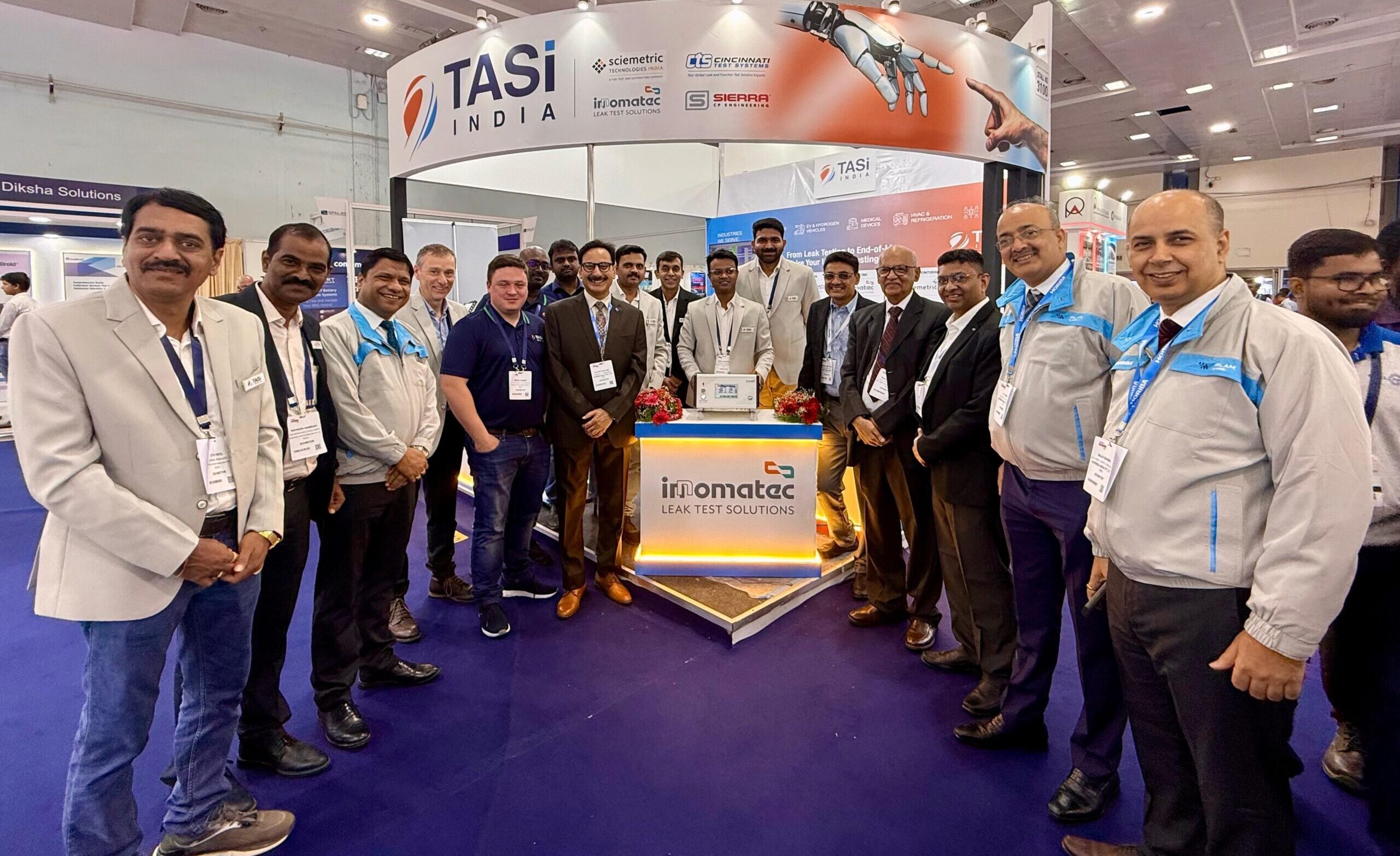
HBK launches next-generation torque measurement
HBK has unveiled the T100, its new sensor for dyno and powertrain testing. This state-of-the-art product is set to transform torque measurement across various industries, offering high accuracy, robust design, unmatched precision, versatile applications, a user-friendly interface, durability and advanced technology. The product was officially launched by SITARC’s Dr Balasubraminum and Vikrant Jagtap, CEO of SAJ. HBK’s director of sales, Prakash Stephen, presented the product features, emphasizing its innovative aspects and practical applications.
Booth: 2066
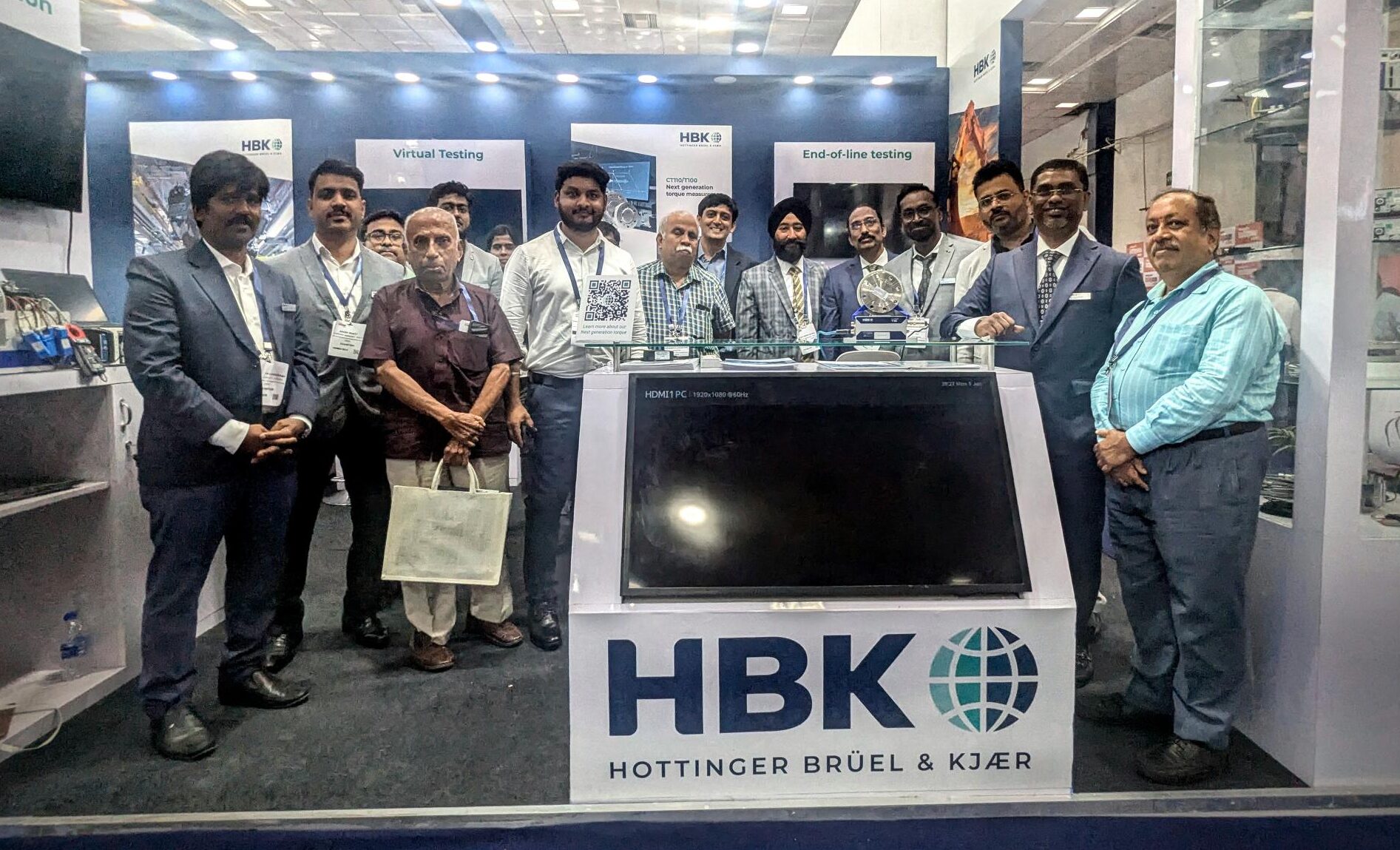
SAJ Test Plant manufactures six 9,000HP dynamometers for domestic and overseas clients
In a remarkable achievement this year, SAJ successfully manufactured six 9,000HP hydraulic dynamometers in record lead times for both domestic and overseas customers – demonstrating its engineering and manufacturing excellence, agility and global commitment to high-performance testing. SAJ executive director Rujuta Jagtap, said, “SAJ Test Plant is proud to participate in Automotive Testing Expo India 2025, presenting its unique and innovative testing solutions with a dedicated focus on the EV domain. From advanced electric vehicle test rigs to fully customized testing systems, our booth showcases technologies engineered for the evolving demands of future mobility. With a razor-sharp focus on both emerging EV technologies and ICE across all domains, SAJ ensures it caters to the complete spectrum of automotive testing needs. SAJ has also been granted patents for its outstanding advancements in new-age testing technologies. Visit us to experience the future of precision testing.”
Booth: 4074
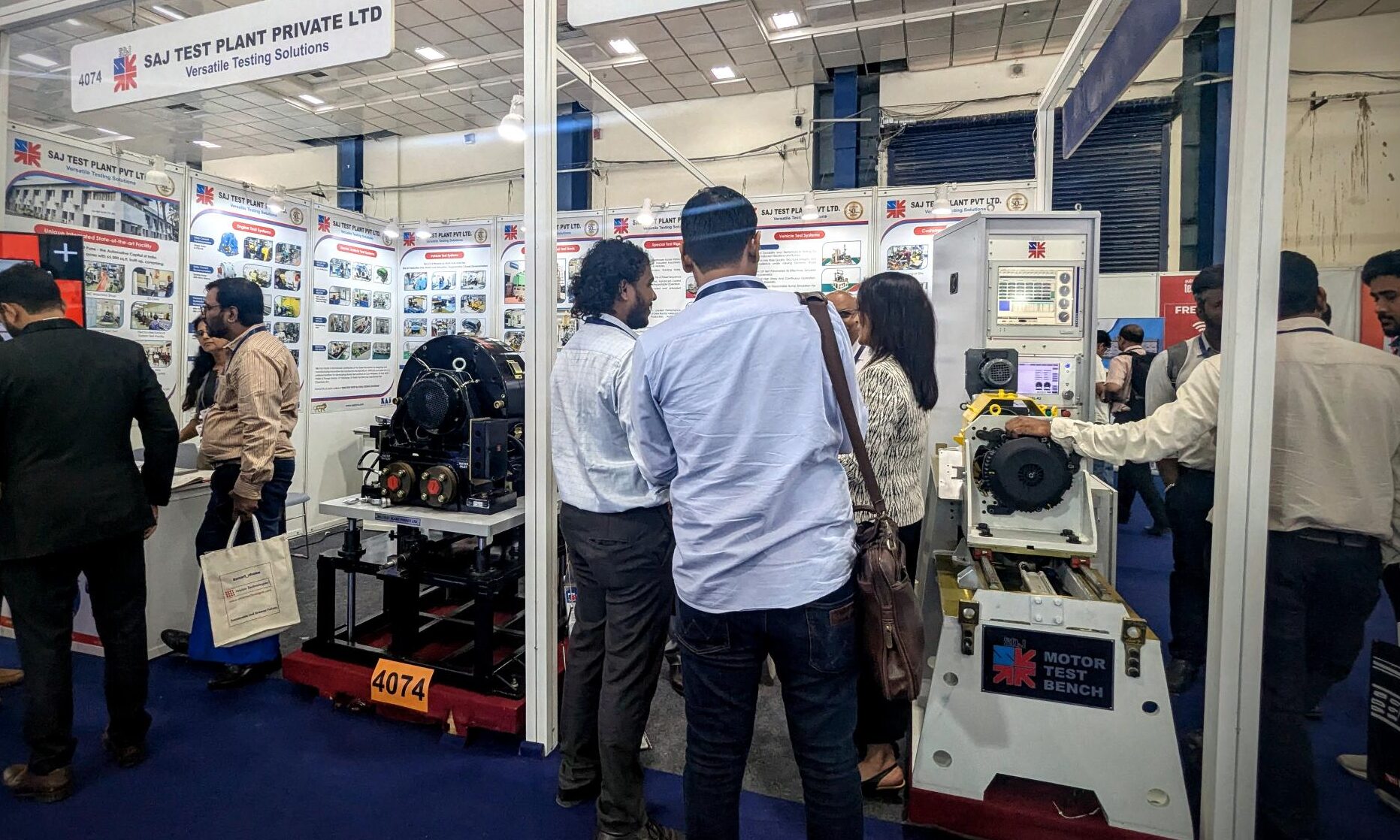
Polytec debuts new standard of non-contact vibration measurement
Polytec South-East Asia is showing visitors its latest scanning system, the VibroScan QTec, for the very first time in India. With laser/any optical measurement techniques, varying sample surfaces resulting in speckle effects are a concern in terms of return signal strength. The patented multi-path interferometer technology resolves this, allowing engineers to perform demanding tasks effortlessly. According to managing director Chris Chia, “The Indian automotive sector has always been vibrant and with recent trends in quality improvement, NVH control and electrification, Polytec seeks to be a key partner in overcoming measurement challenges. We hope to have meaningful discussions with NVH engineers and automotive R&D to employ such techniques in their analysis capabilities.”
Booth: 4038
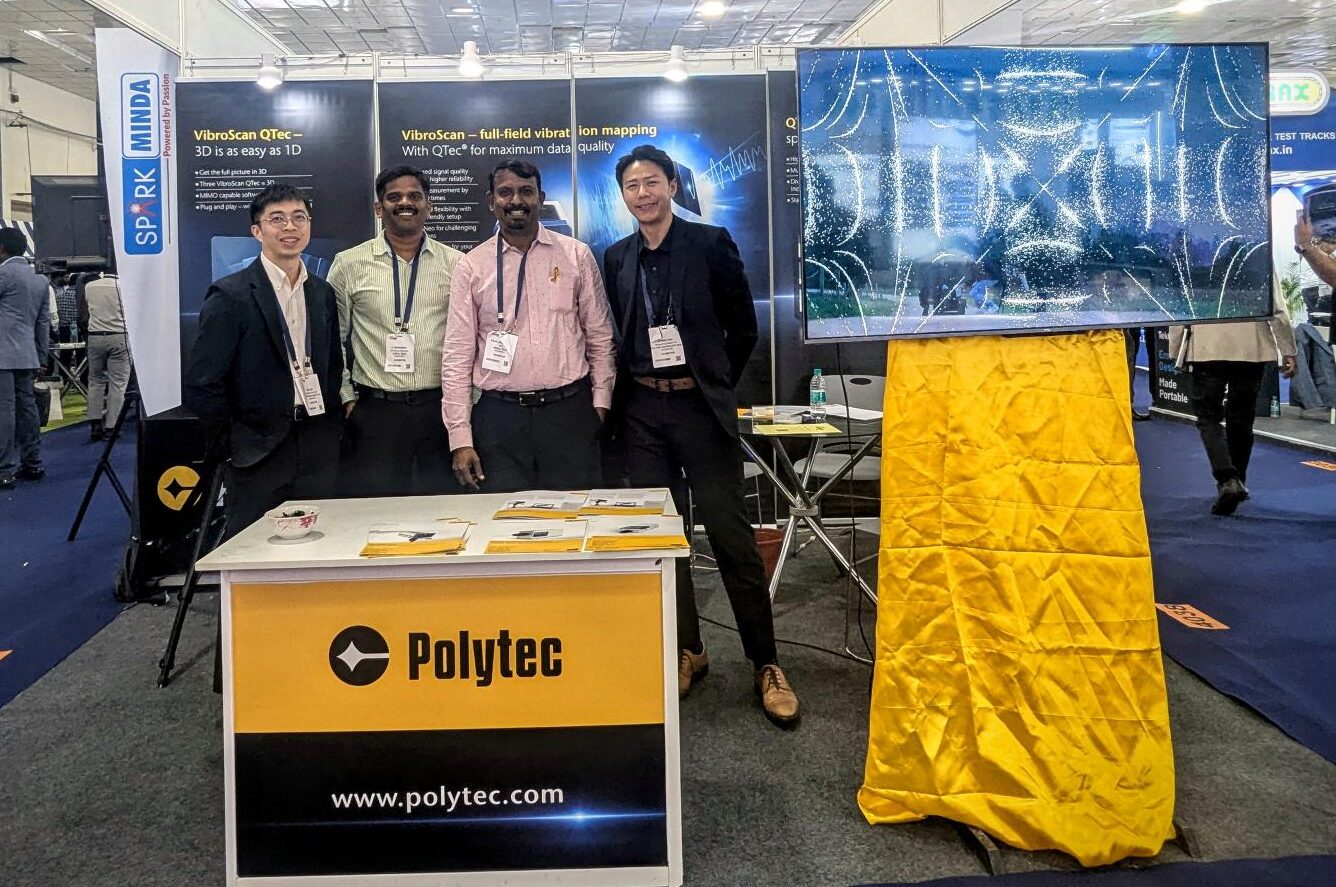
Tasking gives live demos of enhanced debugger
Visitors to Tasking’s booth are seeing the company’s new corporate branding as well as experiencing the iC7 family next-gen BlueBox debugger including virtual ECU support. The debugger features enhanced debug and trace performance for swift and efficient debugging processes. Tasking’s senior application engineer Mohamed Zuhair Ariyu said, “Visit our booth to experience live demos and explore powerful toolsets for TriCore Aurix, Arm Cortex-M/Cortex-R, and RISC-V. Engage with our experts to solve your challenges with our latest innovations.”
Booth: 3064
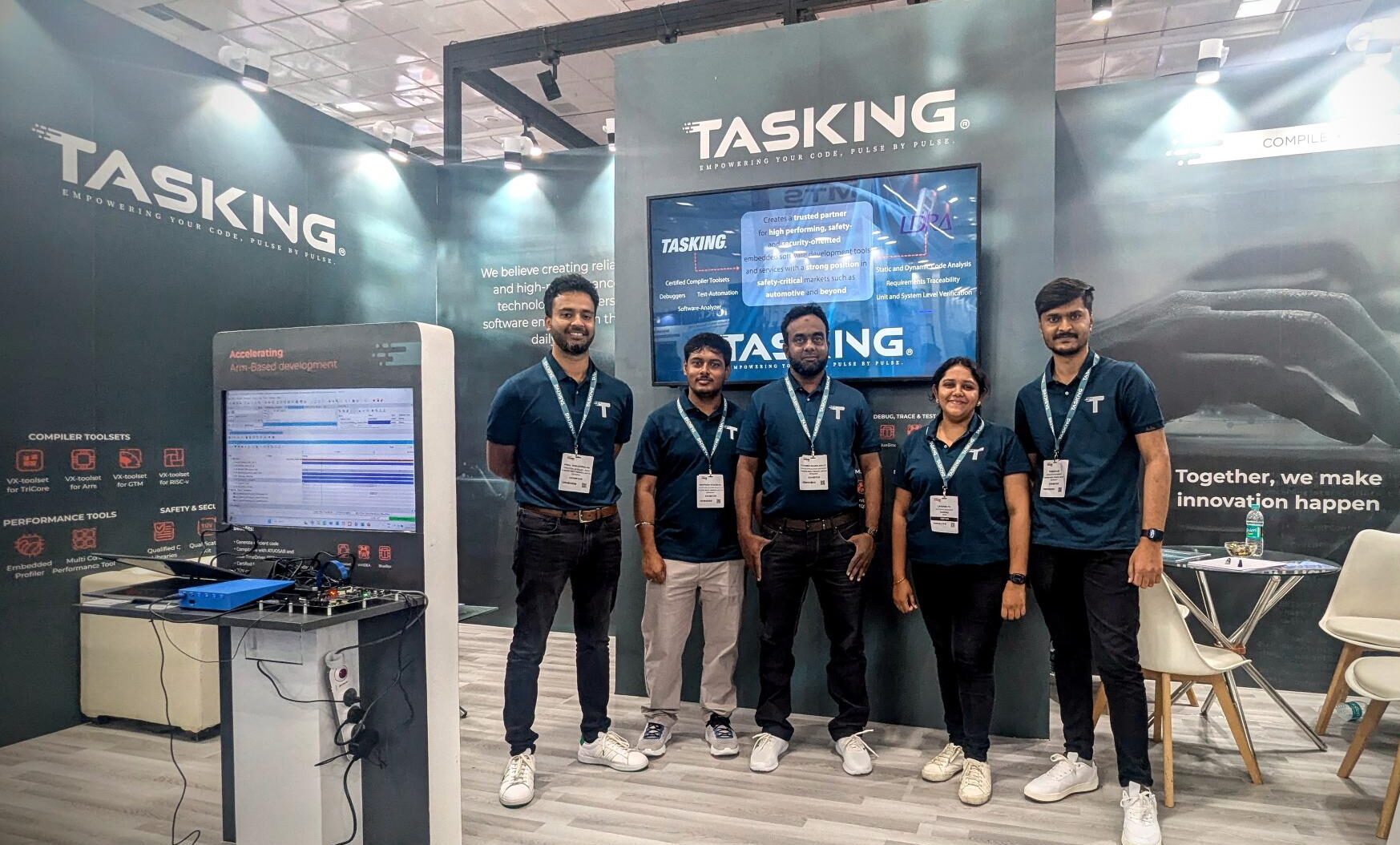
MaxEye Technologies debuts cellular network emulator and battery cell simulator
Two new products are being introduced at MaxEye Technologies’ booth. The MWT-200 cellular network emulator can simulate two networks (2G, 4G and 5G) simultaneously plus multiconstellation multiband GNSS signals, thus enabling critical safety features such as eCall/NGeCall and CV2X. The company’s MBCS-12 battery cell simulator is a programmable, 12-channel isolated voltage source module that supports up to 240 cells with 1,200V maximum voltage. “We are demonstrating our new test products and solutions for future mobility trends like electrification, autonomous driving and connected mobility,” said director Ramesh Krishnan Narayanan.
Booth: 2042
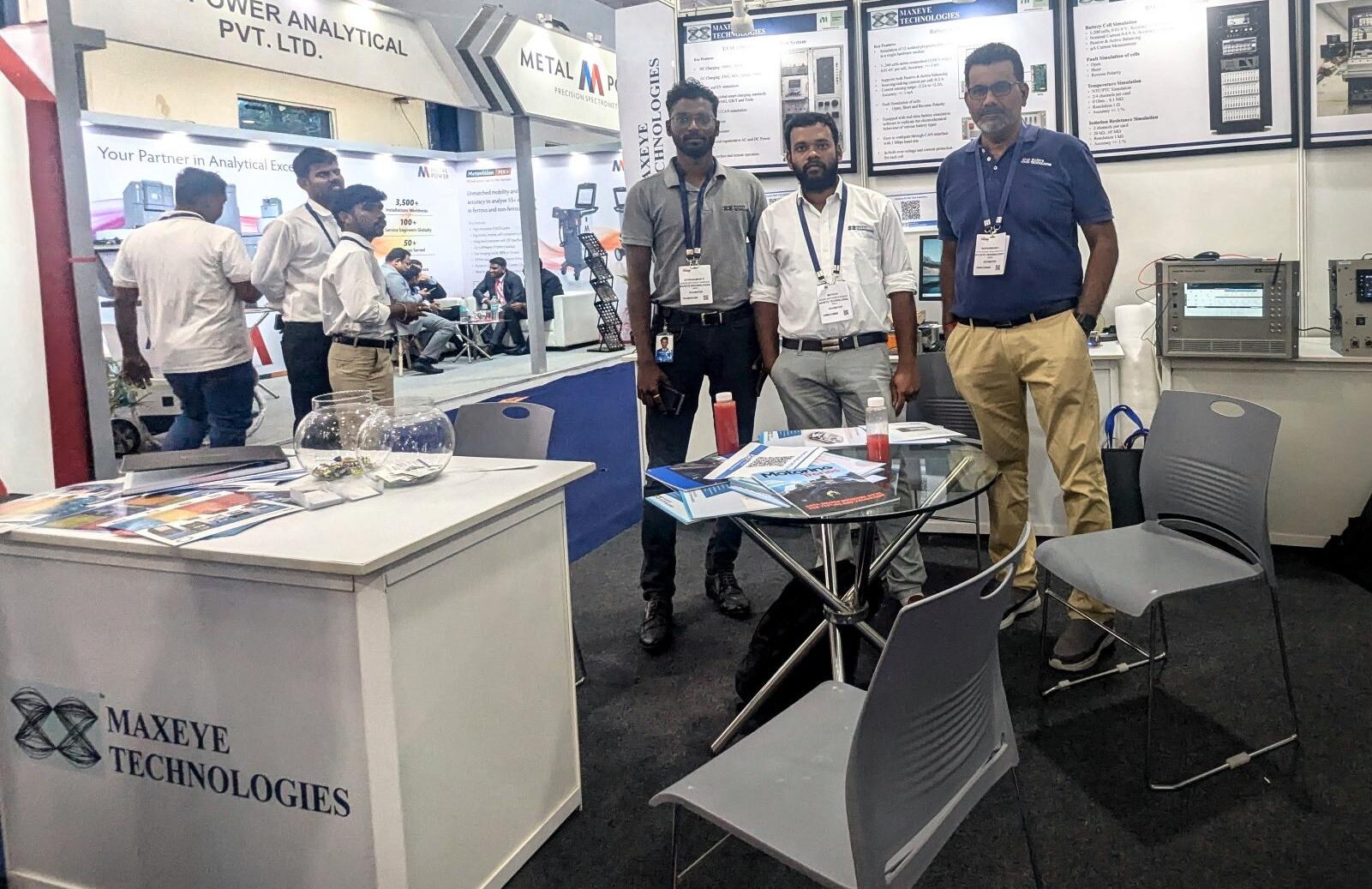
There’s still time to join us for Day 3 – get your FREE pass for tomorrow!


